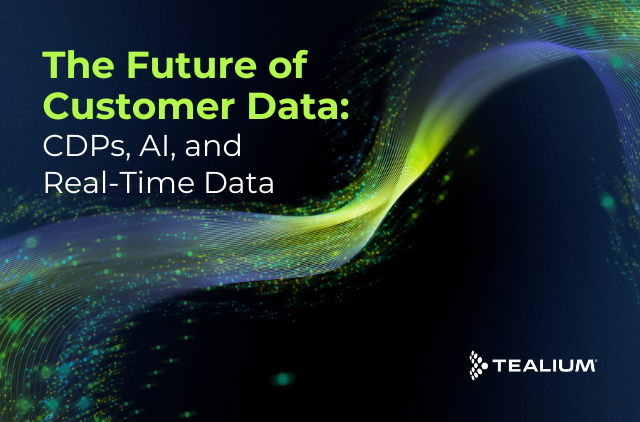Data-driven marketers are rising to the top for their focused and intentional use of data in strategy, analysis and execution. Gartner defines data-driven marketing as “the use of data acquired through customer interactions and third parties to gain insight on customer motivations, preferences and behaviors. Data-driven insights enable organizations to enhance and personalize the customer experience.”
In today’s world of booming privacy regulations and the expectation from customers that data given be used to their personal benefit through personalized customer experiences, there is almost no choice but to be a data-driven marketer. Without the use of data, in an intelligent and thoughtful manner, marketing becomes a stale interaction that will lead to fewer consent agreements and lost opportunities.
Customer data provides critical intel on customer interests, behaviors, and trends that should then shape your marketing strategy to increase customer engagement and loyalty. And this commitment to customer data as a driving force for your organization can’t just be at a high level, but must be ingrained into your daily work habits and practices.
Daily Practices of Leading Data-Driven Marketers
There are many ways to weave data-driven marketing into your daily work life. For instance, you can set intentional weekly meetings or scheduled emails to review key data points that will help break down internal communication silos. You can ensure that your teams are set up with the right data analytics tools to help reporting and analysis that will bring data to the forefront on a daily basis. You can work key performance indicators (KPIs) into your daily conversations with staff to make sure all conversations are being led by data. And you can establish clear goals and use performance metrics to assess progress on a daily basis.
These activities will align responsibilities of the internal marketing dept and the organization at large with what strategies should be tackled next and in the future, based on concrete data.
However, data-driven marketing’s role in the organization goes beyond operations and into the customer experience. How can marketers leverage Technology strategies and assets to deliver an excellent customer experience?
A data-driven marketer is constantly focused on measurement and performance, and those two realms of discipline manifest in three areas:
- Track customer behavior and associated trends, progress and status: Data-driven marketers want to know who is in-market, who is an advocate, who is new, who is just researching their offerings. They want to know all facets of the customer, whether anonymous or known. Using Ad Tech and MarTech, like Google Ads and FB, Amazon, etc, different behaviors outside of the data-driven marketers owned and operated properties lead to more insights about these customers. This can in turn lead to new strategies being formed depending on where the customer behavior is taking place. There is a lot to learn here, and always will be.
- Focus on customer and audience insights (both first party and third party): Data-driven marketers want to leverage their knowledge of their customer base and use that knowledge to better engage and deliver better messaging/advertising when it counts. They constantly data-mine their systems for these dual insights, learning about the customer changing state (different from “Customer Behavior” in the first point), and why customers have arrived in that state. Data-driven marketers know that learning about what devices their customers use, their purchasing patterns, etc, will drive new innovation from the data-driven marketer into machine learning and AI, and encourage the use of external third party data that lends more intelligence to their owned results. (This third party data can be purchased datasets like in the traditional world of DMPs and Data Brokers, or it can be external data presented to the DDM by other Brands in Data Clean Rooms, like for example an agreement with Disney+ to share their first party data together).
- Align the Customer Journey Maps to the Marketing Budget: Ah, where to spend the marketing budget, the perennial question. A customer journey is much more sophisticated today than it ever was. Customers engage with brands on the Open Web as well as in Walled Gardens and the owned and operated properties of the Brands. That’s a lot of traveling data! The customer journeys intersect and evolve, depending on good or bad experiences and the changing macro environment of the web itself (e.g. how will the Metaverse change journeys? Nobody really knows, but data-driven marketers are starting to establish baselines for comparison), and the new products or services that the brand is producing. It’s a constantly churning observation, and it’s the most exciting part about being data-driven, because the data is always popping up in new places that need exploration, assessment, and yes, perhaps investment that the data-driven marketer must convince their leader to buy into. The Customer Journey is always in flux, but customer data provides a great map for success.
For more information on how to integrate all your data sources so you can become a truly data-driven marketer, check out our recent eBook “Customer Data Integration 101: How to Integrate Data from Different Sources Into Your CDP.“








